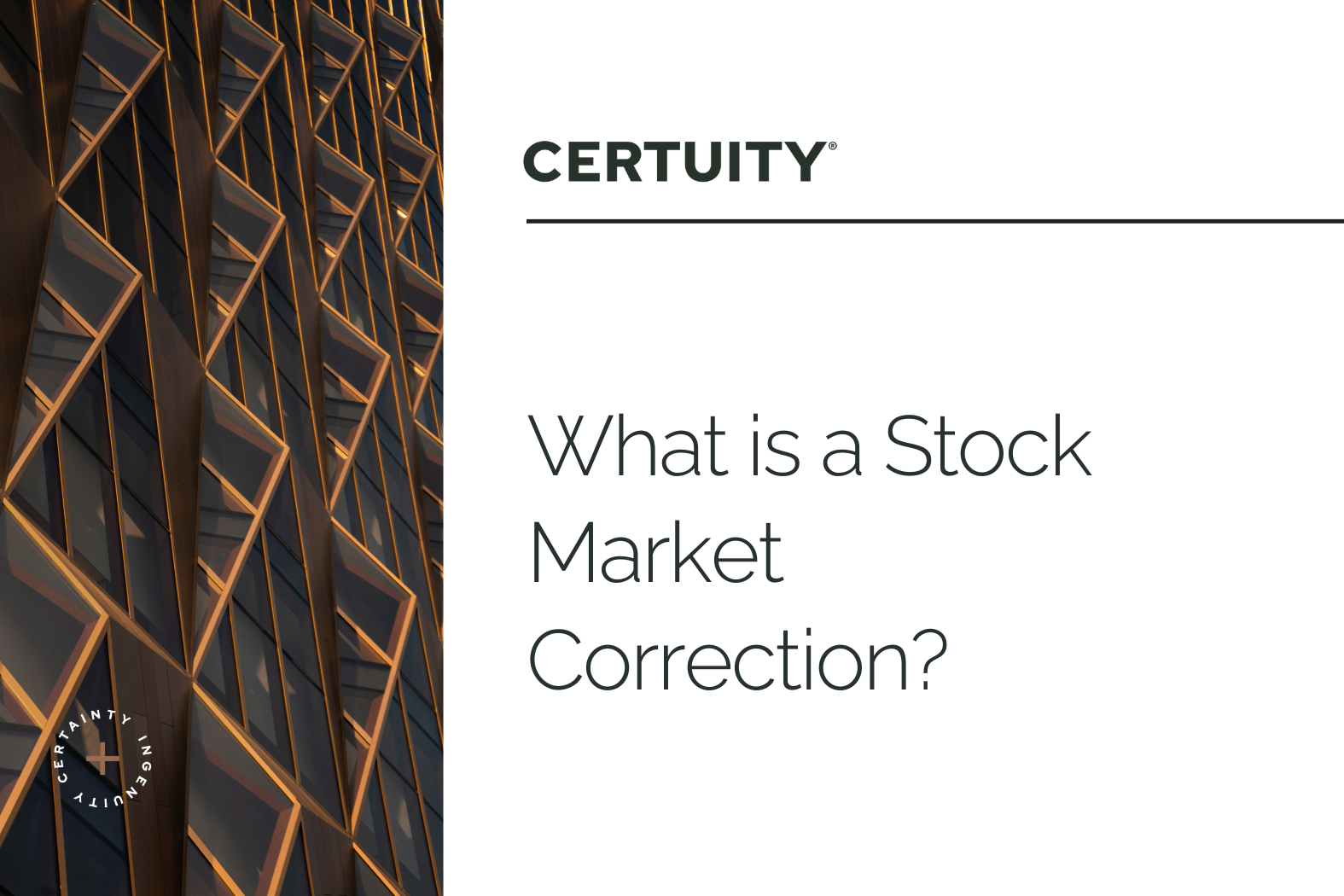
Key Takeaways
- A stock market correction is a decline of 10% to 20% from a recent high in a major index.
- Corrections are often triggered by a mix of concerns—rising interest rates, inflation, overvaluation, or geopolitical events—and are not necessarily signs of a bear market.
- While past performance is not indicative of future results, historically, the majority of corrections have been short-lived and followed by rebounds.
- During corrections, maintaining diversification, rebalancing, and avoiding emotional decisions can help investors stay aligned with long-term goals.
With markets dropping into correction territory before sharply bouncing back this month, you may be wondering what a correction is, what triggers them, and what you should do during them.
Below, we cover exactly that and share advice for investors to remain calm and disciplined when market volatility strikes.
A stock market correction is a decline of 10% to 20% from a recent high in a major index like the S&P 500 or Dow. Corrections are a normal part of the market cycle, often serving as a healthy pause after a strong rally. Unlike crashes or bear markets, they usually play out over weeks or months—not years—and can help prevent larger imbalances by easing investor enthusiasm.
While unsettling, corrections aren’t inherently bad. They often create buying opportunities for long-term investors. Historically, they have occurred every one to two years on average and last three to five months. Going back to 1929, the average correction lasted for 115 days.
On March 13, 2025, the S&P 500 entered its first correction since 2023, falling 10.1% from its peak to close at 5,521.52.
Correction vs. Bear Market vs. Crash
While these terms are often used interchangeably, each represents a different level of market decline.
- Correction: A market pullback of 10% to 20% from recent highs. Corrections are usually short-term and are often driven by technical or sentiment-based factors, rather than deep economic issues.
- Bear Market: A more severe decline of 20% or more, often sustained over months or years. Bear markets usually reflect fundamental economic challenges, such as recessions or major shifts in interest rates or corporate earnings.
- Crash: A sudden, sharp drop, typically exceeding 20% in a matter of days or weeks. Crashes are driven by panic selling or systemic shocks and can lead to longer-term instability if not contained.
What Triggers a Market Correction?
Corrections are driven by a variety of factors—some economic, others psychological. Here are a few of the most common causes:
- Rising Interest Rates: Higher rates raise borrowing costs and reduce the present value of future earnings, which can weigh on stock valuations—especially in growth sectors.
- Inflation Concerns: Persistent inflation can cut into corporate profit margins and prompt central banks to tighten monetary policy, both of which can spook markets.
- Overvaluation: When stock prices get too far ahead of earnings or fundamentals, even modest disappointments (e.g. weak earnings reports) can trigger a pullback.
- Geopolitical Events: Wars, trade tensions, or political uncertainty can erode investor confidence and prompt rapid reallocation of capital.
- Black Swan Events: Rare but impactful events—like a global pandemic—can lead to broad, indiscriminate selling.
Often, it’s not one single factor but a confluence of concerns that causes investors to reassess risk and pull back from markets.
How Long Do Corrections Last?
If you’re wondering how our present period of volatility will last, you’re not alone. Corrections can feel unsettling in the moment, but history shows they tend to be relatively brief and manageable for long-term investors.
- Going back to 1929, the average correction lasted for 115 days.
- Since 1929, there have been 56 market corrections, of which 22 evolved into full bear markets.
- The majority of corrections have been followed by rebounds. In fact, some of the market’s best-performing days have often come shortly after the worst days – which is why investors should not try to time the bottom.
Understanding that corrections have often been short-lived can help investors remain calm and disciplined during periods of volatility.
What Should Investors Do During a Correction?
A correction can serve as both a stress test and a buying opportunity. Here are some time-tested strategies to consider:
- Stay Invested & Lean on Your Plan: Long-term investors who resist selling during downturns are typically rewarded. If you’ve built an investment plan aligned with your long-term goals and risk tolerance, a correction shouldn’t require drastic changes.
- Maintain Diversification: A well-diversified portfolio across asset classes, risk factors, sectors, and geographies can soften the blow of corrections and reduce big swings from any single investment.
- Rebalance Your Portfolio: A correction may shift your asset allocation. Rebalancing helps maintain your target risk exposure by trimming what’s overweight and adding to what’s underweight.
- Keep a Cash Buffer: Having dry powder on hand allows you to take advantage of buying opportunities during corrections without needing to sell other assets at a loss.
- Avoid Panic Selling: Selling after a drop locks in losses. It’s often wiser to sit tight and reassess once emotions have cooled.
- Consult a Professional: A financial advisor can help remove emotion and maintain objectivity in your financial decision-making to ensure your strategy remains aligned with your long-term goals and time horizon.
Summary
Stock market corrections are an unavoidable—and often misunderstood—part of investing in the markets.
While they may stir anxiety in the short term, they are rarely signals of deep, structural problems. With the right mindset and a disciplined approach, investors can weather corrections, and sometimes even benefit from them by identifying opportunities that aren’t available during bull markets.